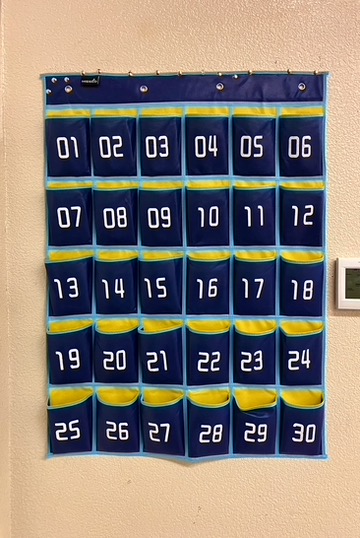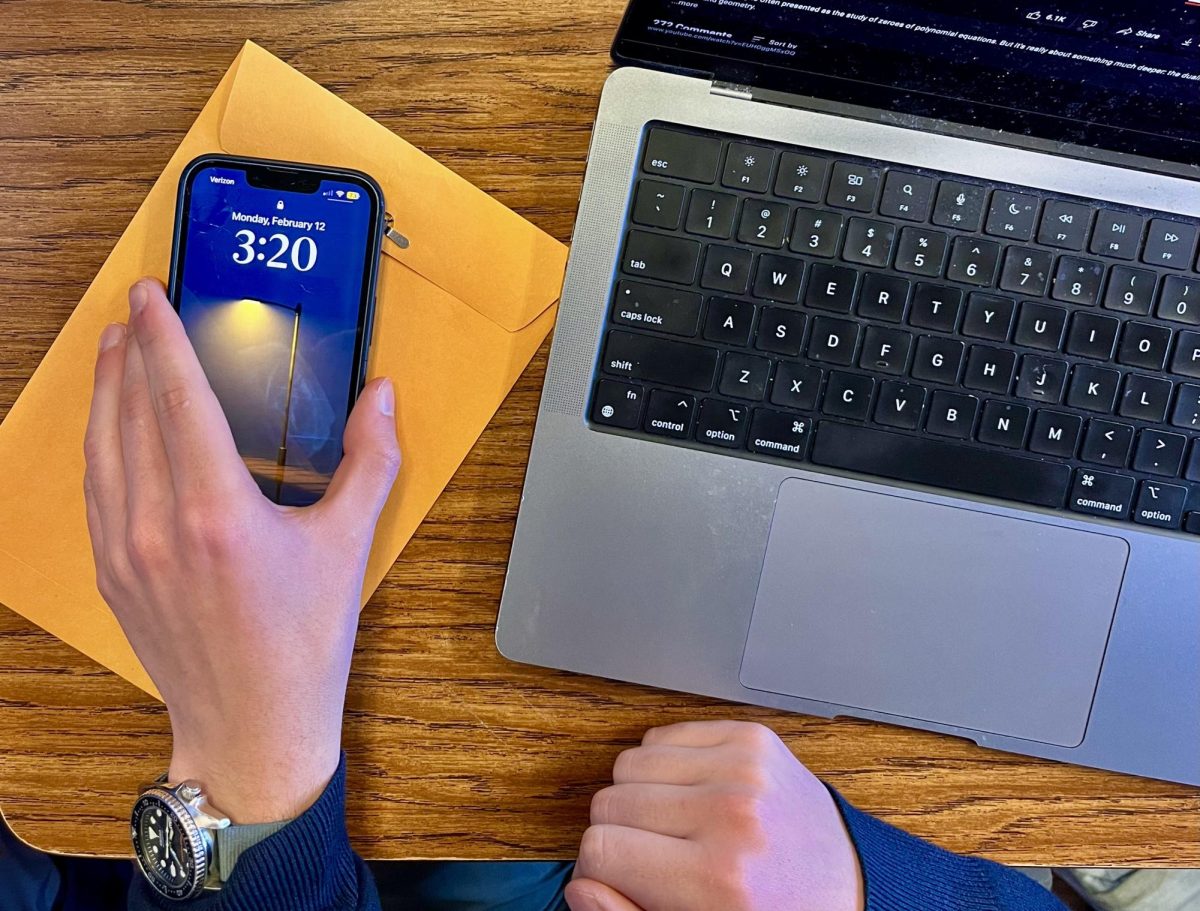 A teenager’s phone can buzz hundreds of times in a day while teachers innovate strategies to keep students engaged in class and off of their cell phones.
A teenager’s phone can buzz hundreds of times in a day while teachers innovate strategies to keep students engaged in class and off of their cell phones.
Different teachers take different approaches to limiting cell phone usage during their classes. Across disciplines, teachers seem to have one common goal: students respecting their guidelines. Teachers develop methods to keep students off their phones during learning time. Over 95% of teens aged 13-17 have access to cell phones. Ethnic studies teacher Jenny Ortez uses a cell phone pocket system hung by her desk. Each student has a numbered pocket assigned to them to place their phone during class.

“In the beginning, students did not like it,” Ortez said. “They find that as time goes on, they are okay with it.”
Ortez’s system keeps phones out of reach from students during class time. Other schools, such as Design Tech High School in the San Mateo High School District, have implemented similar policies with Yondr pouches on a school-wide level. Such technology takes one step further by physically locking phones until out of a certain range of area. Solutions like this do address the aspect of teachers reminding students to put their phones away, even if the expectation is already clear.
“Normally, before the class starts, I’ll either greet students at the door and ask them to remove their headphones just to avoid any of those issues,” film and English teacher Joshua De Bets said. “Once class starts I usually use my eyes and roam the classroom. If any phones are out [I ask] that students put them in their backpacks or in their pockets.”
Aforementioned reminders serve as a common denominator between several classrooms. Along with Ortez, math teacher Diep Clunn expressed that they want to avoid the conflict of continuously telling students to put their phones away.
“It was a struggle to constantly go to a student and say, ‘put your phone away, put your phone away,’ or ‘give me your phone, give me your phone,’” Ortez said. “There was just so much conflict that I did not want anymore.”
Clunn addressed the same issue with a different method.
“We have a no cell phone policy in the classroom,” Clunn said. “It is pretty black and white. If a student is caught using it, I just take it and keep it for the whole period.”
Rather than taking phones at the beginning of the period, she will only take them once an offense to her policy occurs. Clunn also keeps a list of names of those who break her policy so that she can be aware of repeat offenders and know if further consequences must be implemented. Her clear-cut phone policy reduces chances for students to feel targeted when their phones do get taken away.
“Have you heard students say, ‘how can you take my cell phone, not his cell phone?’” Clunn said. “That happens often if a teacher is not consistent with their policy.”
Teachers’ unique policies help them to run their classrooms in a way that is most effective given their styles of teaching. No teacher claimed that their policy was better than others, but rather that it was what worked best for them.
“I really believe in teacher autonomy,” Ortez said. “Teachers have the right to do what is best for them.”
When asked about a school-wide policy on phones, answers between teachers differed. Teachers had inconsistent understandings of the already-in-place phone policy, as stated in the student handbook. Students are expected not to have phones out during class and the handbook. A first offense to this policy can have consequences up to detention and confiscation of the device until the detention is served. According to the teachers interviewed, very few teachers go to this extreme.
“I feel like it’d be great if there was a school-wide policy,” Clunn said. “It [would be] really hard to implement.”
Ortez voiced similar concerns about how a school-wide phone policy would be enforced.
“I don’t know if the school-wide policy would work because the way I feel about the cell phone pocket, other teachers would not like that idea,” Ortez said. “I wouldn’t want to impose my idea onto other people.”
De Bets was the only one out of these three teachers, who was aware of some sort of already-standing phone policy.
“I know that we do have a whole school-wide policy where phones shouldn’t be allowed,” De Bets said.
The debate on cell phones may seem like an attack on electronics, but some teachers do utilize technology to enhance learning experiences in their classrooms. Ortez allows Chromebooks and laptops for activities like Kahoot. De Bets allows students to use their phones to listen to music while typing for his English classes.
“We do a lot in my classes so the downtime tends to be [minimal],” De Bets said. “I will also say if there is a slow day or if we have some downtime, I can respect [letting] students use their phone during that time.”
Teachers want to foster an environment that supports helping their students learn. Phone policies may seem oppressive to students, but teachers have their reasons.
“I want to enjoy having students in class and not be a phone police,” Ortez said.









